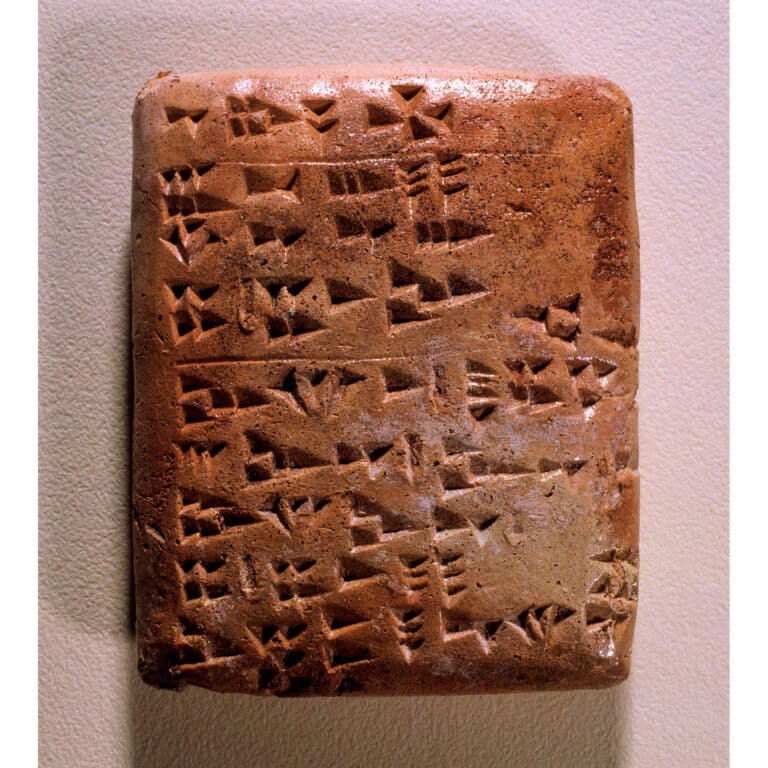Background
In the late 1920s, the ruins of an ancient city called Ugarit were found on the coast of Syria at a site called Ras Shamra. Among the ruins, archaeologists discovered thousands of clay tablets with an unknown kind of writing on them. The writing looked like that used by the ancient Babylonians and Assyrians, a kind of writing called cuneiform, but the signs were unique and far fewer in number. While the language that the Babylonians used-Akkadian-was written with hundreds of signs derived from the ancient Sumerian writing, the new tablets employed only 30 signs.
Because of the location of the city scholars thought that the language used in the tablets probably belonged to the same group of languages that Hebrew and Aramaic belong to. In a remarkably short period of time, they were able to decipher the signs and they found that the language was quite close to Hebrew and Aramaic.
Ugarit
Ugarit was an important city in its time, but it was destroyed in the 13th century B.C.E. by invaders called the Sea Peoples. This was just before the Israelites began to settle in the land of Canaan. The people of Ugarit worshipped many gods and goddesses, among them El, Baal, Asherah, Anat, and Astarte. Baal and Asherah are mentioned in the Bible as gods the Israelites should not worship.
The Texts
A number of tablets contain myths of the gods, particularly Baal. They have contributed to our understanding of both the Bible and the religion of Baal that the Hebrew prophets condemned. These and many other kinds of tablets have also improved our understanding of the Hebrew language used in the Bible.
The tablet seen here is a contract having to do with the setting up of an association called the MRZH (marzeah). This association was a group of people who got together regularly in a special room in someone’s home to celebrate and hold banquets, probably for religious reasons. Some scholars think they may have practiced certain rituals to honor and mourn the dead. We do know that the biblical prophets Amos and Jeremiah disapproved of whatever rituals were involved; see Amos 6:7 and Jeremiah 16:5.
Photograph by Bruce and Kenneth Zuckerman, West Semitic Research. Courtesy the Schoyen Collection.

Article Categories
Non-Biblical Ancient Texts Relating to the Biblical World: Non-biblical inscriptions and documents from ancient times that improve our understanding of the world of the Bible.
Biblical Manuscripts: Images and commentary on ancient and medieval copies of the Bible.
Dead Sea Scrolls: Images and commentary on selected Dead Sea Scrolls manuscripts.
USC Archaeology Research Center: Images of artifacts from the teaching collection of the University of Southern California.